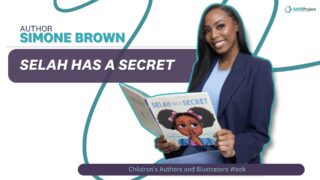In this interview, we spotlight a passionate youth advocate who is leading the charge to eliminate stigma. Though some sections have been lightly edited, it is otherwise presented in their own words. Learn more about SAFE Project’s volunteer program, including our Youth VOICE Council.
Can you share a little about yourself and how you got involved with SAFE Project?
My name is Savannah Kileski. I’m from East Troy, Wisconsin. I grew up with substance use prevalent in my home. My mom has struggled with substances pretty much for my whole life. That affected me, obviously. It affected our finances, my mental health, and developing friendships. As I got older, it was hard to talk about those things, but now doing all the stuff I have been recently, it’s been so much easier and freer to talk about it and breaking that stigma down, even for myself, being in that situation.
Can you speak to stigma a little? Where does that start, and then how do you break free and fight against that?
I think for me, it manifested a lot just because I’m in a small rural town in Wisconsin. A lot of people like to picture themselves like living the perfect life and being in a small town. There’s lots of things that go on and maybe a lot of people that that do use, but it’s just not talked about. It’s whispered about behind closed doors. Going to school and having no one to relate to on this issue, or no one talking about it, or not really knowing what to do or being too scared to talk about it, I think manifested the stigma for me — I stigmatized myself in my situation and I didn’t want to talk about it. I felt so isolated or I was scared to talk about it and get taken away from my family, because there’s there was the CPS (child protective services) aspect of it all, too. So not knowing what to do or who to talk about it with was very scary. I think that made me neglect the situation a lot and just put it off and just think, “Oh, it’s normal.” I just normalized the situation. This is my normal, too.
What have you found the role of youth in particular to be in this fight against stigma?
I think it’s very important to start young and also realize that a lot of the issues that affect our adult population started when they were youth, so fighting against that and realizing that a lot of your habits and behaviors start when you’re in childhood.
The opioid epidemic is a real thing and not something that we want to keep going on. I think realizing it even younger and younger is going to help combat that.
With that, how did you find SAFE Project and what interested you to get more involved?
I’ve been working with another organization, Start Healing Now. Last year, I put overdose aid kits (or “OAK boxes”) in my school. Then through that, I continued on working with them. They introduced me SAFE Project, and over the summer and learned a lot more about SAFE. Every day I researched a little bit more and talked about it with my family.
It was something that really interested me because I started working a lot with other individuals in this field, but a lot of them were adults, which is very cool and is an honor to get to do… but also it’s a very interesting viewpoint being the only youth in a group full of adults. It’s nice to get the opinion of other individuals my age. At my school that I go to, there’s probably 500 kids in the whole school, and that’s 9th through 12th. It’s hard because some people don’t share my same interest or think it’s a little bit weird that I’m so open to talking about it. Even now, I’m more open to talking about it and less stigmatized with it, but it can still feel a little bit isolating that I’m the only one who does talk about it or is willing. It’s nice to know that I’m not alone in other youth and other people my age feel the same passion and leadership towards this.
Can you explain more about the “OAK boxes” — what they are, and what challenges you faced along the way?
Last year, we had to do a service learning project in my AVID 11 class, which is like a college prep class. Obviously, because this is something that was very prevalent of growing up, I was looking at ways to help with drug fatality and stuff related to this field. I came across “OAK boxes” in my research because the county right next to us — Waukesha, Rasha County — set aside a lot of money in their health department to put overdose aid kits all around.
These are overdose aid kits. They’re metal boxes, and they contain fentanyl testing strips, breathing masks, DisposeRx packets, information and education on resources, where you can go if you need help, phone numbers, and they obviously contain Narcan, too. They’re hung up, typically in schools. When I learned about that, I was like, “Oh, that’d be super cool to put in my school.”
Although we are a rural community and a very small school, like I mentioned, it’s still prevalent in my community. Anything could happen. It’s just a safety precaution. I did face a lot of hurdles in the process. I had to first talk to my school superintendent. They were like, okay, so we need this, this, and this from you. I did a lot of more research, went back to them and portrayed it a little bit better and explained myself. From there, I presented to my school board. Then it unanimously passed. I started this whole process around early October, and then I didn’t present to the school board board until April or May. Then we got it installed officially at the end of May.
For a long time, it was just emailing back with Start Healing Now: “Hey, what can I do to make this sound better? What can I do to help persuade people?” I had never dealt with anything of the sorts like this. I would run into a wall and people would say, “But you’re promoting drug use.” I was like, that’s not what I’m trying to do! I didn’t fully understand how to explain myself yet. It was a huge learning curve for me–explaining myself to adults who felt scary. I tried to elevate the way I spoke, the way I was presenting things, and the analogies I used, especially. One that I liked using while talking to people and explaining this was that we have fire extinguishers in the building. We don’t hope people burn down the building. We aren’t expecting it, but it’s there as a safety precaution. It’s the same thing with these “OAK boxes” and Narcan.
Then we got them installed, and I met a lot of more cool people. Senator Jesse James came to our installation. We also had the Love Logan Foundation there. I made a lot of cool connections and got to hear a lot more inspiring stories through that.
Can you share your thoughts on Prevention Month and how that was pivotal for you in your journey?
One of the main things that we did at my school was the Red Ribbon Week. We weren’t able to host it during the actual week, but it was still very important to me to get that education out there and to have resources for it and talk about it. Once I learned about it through SAFE’s Youth VOICE Council, I was amazed. My community had never participated in it. I had never heard of it. I was like, wow, something so prevalent and that is national. How could I have never heard of it? I think I was just in awe, which made me even want to do it more because I thought this is something that we should be incorporating
We got SAFE Project’s little red ribbons, and even still, my teachers have them hung up in their room, some of my friends stapled them to their backpacks, and people have them in their little cars hanging up. Going around and seeing that is still cool because although it’s been a while since the presentation has happened, but that reminder of the education is still there. We also have our display still hanging up in our school. We painted Red Ribbon Week on the window, and then we had everyone write down little messages on paper red ribbons. Hearing about what people want to achieve and the healthy goals that they want to obtain for themselves was very inspiring and an honor.
Also with Love Logan–in the beginning of this school year, we had them in for a presentation school-wide. We presented from fifth grade to twelfth grade at our school district. I didn’t even understand the full impact that it would have on my school or that fifth-graders can even begin to understand the opioid epidemic or be affected by it. Although I was a fifth grader at the time and affected by it, I thought I was a a minority in that aspect, or an outlier. It’s so sad to me that every day, younger and younger kids are getting affected by it, but it’s so amazing to me that I can give them hope and the education and the resources that they need to cope and to live and to help their parents and to help themselves, too.
Especially in a small town where there are social norms and expectations, and people just think how they grow up is how they have to live and live the rest of their lives. People will grow up with a parent who uses and become the parent who uses. I come from a generational cycle of addiction in my family, and I’m breaking it. It’s not easy, and it’s not going to be a fun process or anything, but it’s obtainable, it’s tangible, and there is hope, and there are people here to support you when you want to make that choice.
What piece of advice would you share with youth your own age?
Take your energy — whether it’s anger, sadness, even happiness — and put it towards something you’re truly passionate about. A lot of the things I’ve been through and dealt with have been very negative. I’ve had very negative emotions a lot of the time. This isn’t always easy to do or be around or hear these stories of recovery when I haven’t experienced that for the person in my life who struggled. But I think taking a lot of your energy and putting it towards something you’re passionate about can be so healthy, whether it’s making a community-wide outreach and impact or even just for yourself, making your everyday life easier by having an outlet to go to and reach out to. Finding other people, like the Youth VOICE Council, can be so rewarding, and knowing you’re not alone in this and having people to talk it through with and hearing new ideas. They’ve all gone through so many different things that you haven’t, and you’ve gone through so many different things that they haven’t. Being beneficial to each other can be huge, in my opinion.


